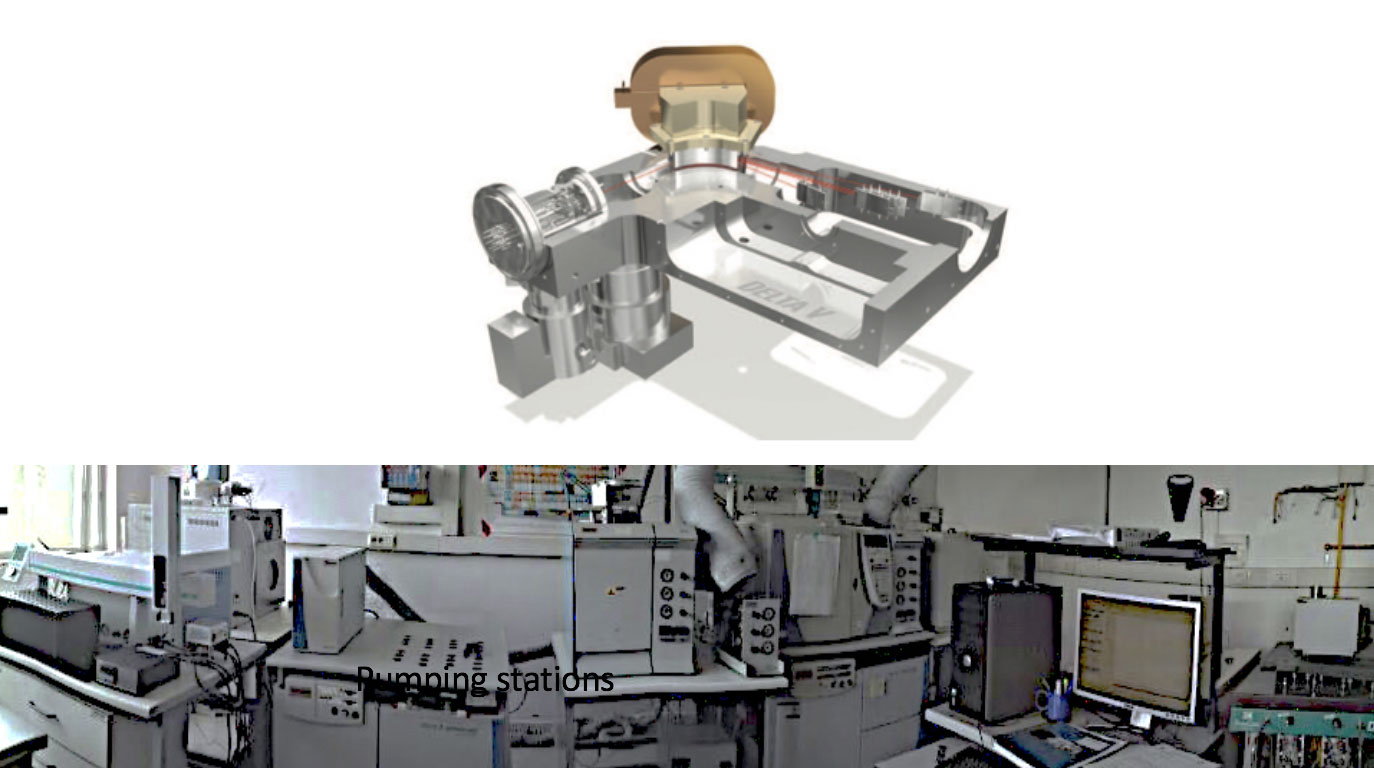- Environmental pollution. Measuring of isotopic ratios in an element as tracing accessories to characterise pollution sources.
- Nuclear safeguarding The isotopic ratio of Uranium (238, 235 and 234) and Plutonium (239 and 240) to track environmental releases from nuclear plants. The isotopic ratios of radiogenic lead (208, 207, 206) and strontium (87) can be used to reconstruct the origin of metals and organic substances, providing information about commercial networks and migratory paths from ancient times.
- Food Traceability Radiogenic strontium can also be used for the characterisation of animal and vegetable foodstuff origin.
The isotopes of a chemical element present common chemical properties, but as they are different in mass, they are subject to small, measurable variations of the natural observed ratios.
The isotopic composition of elements can be measured by determining the isotopic ratios using mass spectrometry techniques:
IRMS (Isotopic Ratio Mass Spectrometry) gaseous source mass spectrometers are used for the isotopes of light elements (H, C, N, O and S).
For the isotopic analysis of metals and metalloids, the mass spectrometry with plasma source (MC-HR-ICP-IRMS, Multi Collector-High Resolution – Inductively Coupled Plasma – IRMS) is used.
For average life radionuclides, including 14C, and long (e.g. 236U, 239Pu, 240Pu) the accelerator mass spectrometry is used (AMS).
IRMS
A gaseous source mass spectrometer can measure the isotopic ratios such as 12C/13C, 14N/15N, 18O/16O, 34S/32S 2H/1H
starting with gas samples of:
- CO2 (12C/13C and 18O/16O),
- N2 (14N/15N) ,
- CO (12C/13C and 18O/16O),
- O2 (18O/16O),
- SO2 (34S/32S and 18O/16O) e
- H2 (2H/1H).
Thanks to the use of online peripherals (or offline preparations), measurements are also allowed on matrices other than gaseous ones, such as, for example:
- The analysis of the isotopic ratios of C, N and S on solid and liquid samples, prior to combustion carried out on-line with an elemental analyser (EA-IRMS);
- The analysis of the isotopic ratios of O, N and H on solid and liquid samples, prior to pyrolysis carried out on-line with a high temperatures elemental analyser (TC/EA-IRMS).
- The analysis of the isotopic ratios of O and H of water and C and O of dissolved inorganic carbon (DIC) or in air.

The applications of this technique cover fields such as:
- Hydrology
- Environmental pollution
- Food Traceability
- Materials Science
MC-HR-ICP-IRMS
The arrival of the high-resolution MC-HR-ICP-IRMS spectrometry (HR implies M / ΔM≅400) has considerably expanded the fields of application of the analysis of isotopic ratios of metals and metalloids, compared to the more commonly used TIMS (thermal ionization mass spectrometry) technique.
Nier-Johnson geometry, combined with multicollector technology, allows for a greater variety of isotopic ratios that can be measured with great precision.
The ICP source allows the easy extraction of positive ions with sensitive efficiencies (≥ 40%) for elements with ionisation elements up to 10 eV.
This great advantage has brought MC-HR-ICP-IRMS to be the elected instrument for isotopic analysis in cosmochemistry. In the last 20 years this method has been used together with TIMS for the isotopic analysis of elements such as Nd, Pb and has fully replaced TIMS for others, for example Hf. It has also introduced the possibility of taking routine measurements of isotopic ratios of elements such as Fe and Mg.